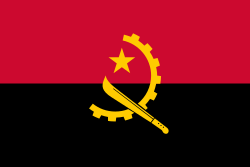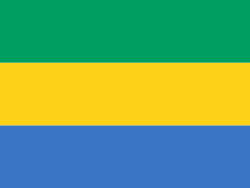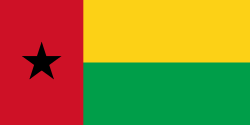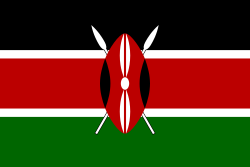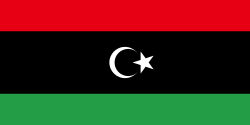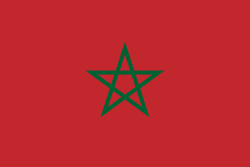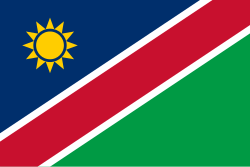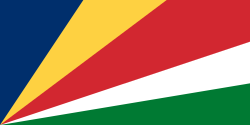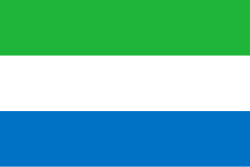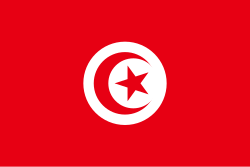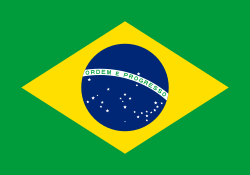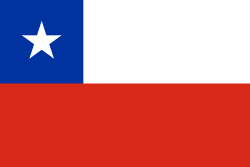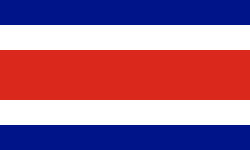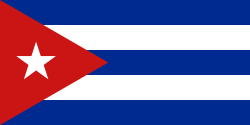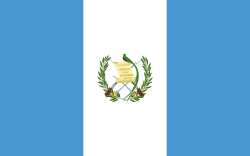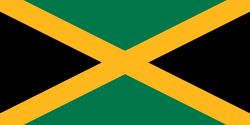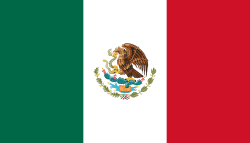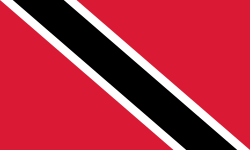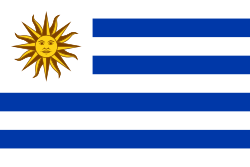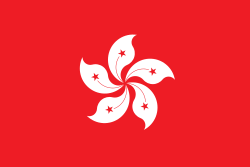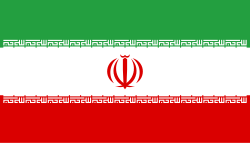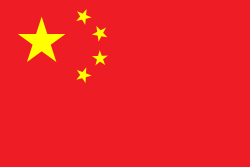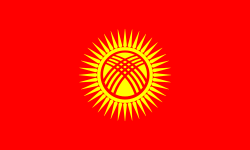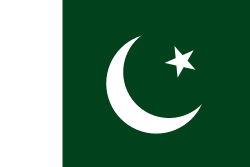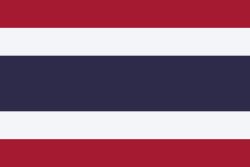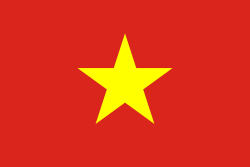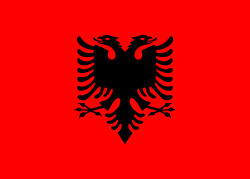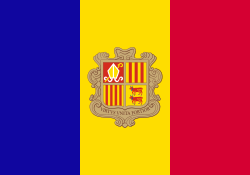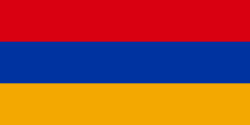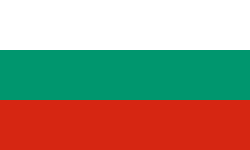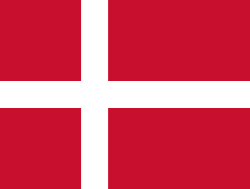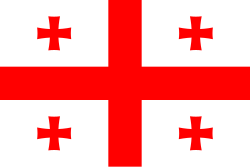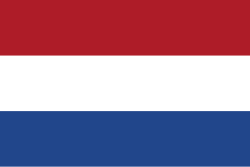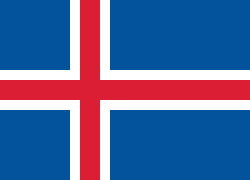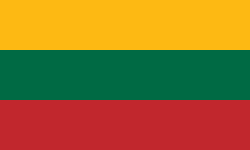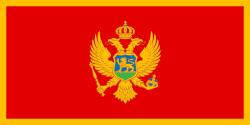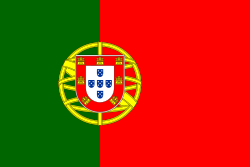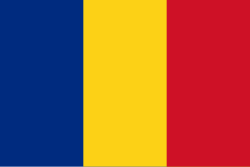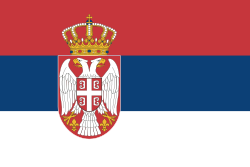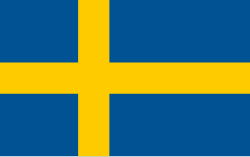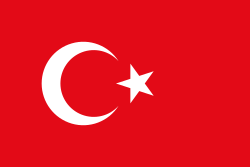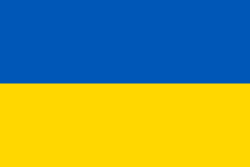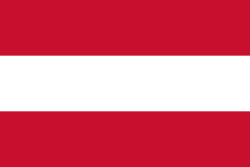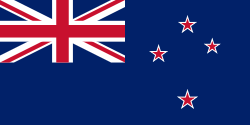National olympisk komité
En national olympisk komité (eller NOK, engelsk: National Olympic Committee eller NOC) er en af de nationale bestanddele af den verdensomspændende olympiske bevægelse. De nationale olympiske komiteer er underlagt kontrol af Den Internationale Olympiske Komité og de er ansvarlige for at organisere sine folks deltagelse ved de olympiske lege. Komiteerne kan nominere byer indenfor deres respektive områder som kandidater til afholdelsessteder for fremtidige olympiske lege. NOK fremmer også udviklingen af idrætsudøvere og oplæring af trænere og tjenestemænd på nationalt niveau indenfor sine geografiske områder.
Nationale olympiske komiteer
Per 2016 var det 206[1] nationale olympiske komiteer som repræsenterer både suveræne stater og andre geografiske områder. I tillæg til selvstændige stater som er FN-medlemmer, har nogen andre territorier nationale komiteer:
- Taiwan er benævnt som Kinesisk Taipei af IOC
- Det palæstinensiske selvstyre, benævnt som Palæstina af IOC
- Fire territorier i USA: Amerikansk Samoa, Guam, Puerto Rico og Amerikanske Jomfruøer (blot benævnt som Jomfruøerne af IOC)
- Tre britiske oversøiske territorier: Bermuda, Britiske Jomfruøer og Caymanøerne
- Et territorium fra Kongeriget Nederlandene i Caribien: Aruba. De Nederlandske Antiller mistede sin status i juli 2011 som et resultat af opløsningen af de Nederlandske Antiller i 2010.[2][3]
- Hongkong, en særlig administrativ region i Folkerepublikken Kina
Liste over NOK'er
Denne liste indeholder de nuværende:
- 206 nationale olympiske komiteer, som er anerkendt af den Internationale olympiske komité, og som er medlem af Sammenslutningen af nationale olympiske komiteer (Association of National Olympic Committees, ANOC).
- 8 nationale olympiske komiteer, som er anerkendt af deres kontinentale olympiske sammenslutning, men ikke er anerkendt af den Internationale olympiske komité. (kursiv)
ANOC-medlemmer kan deltage i de Olympiske lege. Nogle nationale olympiske komiteer, som er medlemmer af en kontinental olympiske sammenslutning men ikke ANOC-medlem, må deltage i konkurrencer på kontinental eller regional niveau. Disse komiteer må dog ikke deltage i de olympiske lege.
De fem kontinentale sammenslutninger er:
- Afrika – Sammenslutningen af nationale olympiske komiteer i Afrika (Association of National Olympic Committees of Africa, ANOCA)
- Amerika – Den panamerikanske idrætsorganisation (Pan American Sports Organization, PASO)
- Asien – Asiens olympiske råd (Olympic Council of Asia, OCA)
- Europa – Europæiske olympiske komiteer (European Olympic Committees, EOC)
- Oceanien – Oceaniens nationale olympiske komiteer (Oceania National Olympic Committees, ONOC)
IOC afholder Sommer-OL og Vinter-OL som konkurrencer hvor alle IOC-anerkendte NOK'er kan deltage i. Hvert kontinent afholder deres egen konkurrencer for deres medlemmer:
- ANOCA - Panafrikanske lege
- PASO - Panamerikanske lege
- OCA - Asiatiske Lege
- EOC - Europæiske Lege
- ONOC - Stillehavslegene
Selvom det ikke er en kontinental union i sig selv organiserer Unionen af Arabiske nationale olympiske komitéer (Union of Arab National Olympic Committees, UANOC) multi-sportsbegivenheder mellem arabisk-talende lande. Alle 22 nationale styrende organer, der danner UANOC er også medlemmer af både AOC og enten Afrikanske eller Asiatiske Lege. Nationale olympiske komitéer fra UANOC-medlemslande, er angivet i listen nedenfor.
Afrika (ANOCA)
1: National olympisk komité er også medlem af UANOC
Amerika (PASO)
Asien (OCA)
1: Nationale olympiske komité er medlem af UANOC
2: Nationale olympiske komité er medlem af OCA men ikke et ANOC-medlem
3: Officiel navn brugt af IOC, ANOC og OCA til Republikken Kina (Taiwan)
Europa (EOC)
1: Israel var medlem af OCA men forlod i 1981, og tiltrådte EOC i 1994
Oceanien (ONOC)
1: National olympisk komité er associeret medlem af ONOC men ikke et ANOC-medlem
Liste over NOK'er efter år for anerkendelse
Nedenfor er en kronologisk liste over de nationale olympiske komiteer anerkendt af Den Internationale Olympiske Komité siden grundlæggelsen i 1894. Mange af disse komiteene blev grundlagt mange år før deres officielle anerkendelse, mens andre blev accepteret umiddelbart efter at være blevet grundlagt. Tidligere stater som ikke eksisterer i dag (f.eks. Sovjetunionen, Tjekkoslovakiet, Jugoslavien) er ikke oplistet, men blot de aktuelle stater som er afledt af dem.
Fodnoter
- ^ a b c d e f Letlands NOC blev anerkendt af IOC i 1923, mens Estlands og Litauens NOK'er blev anerkendt i 1924. Men efter den sovjetiske besættelse af de baltiske lande blev deres NOK's opløst. Da de genvandt deres uafhængighed, blev deres NOK'er genindregnet i 1991.
- ^ Sydafrika deltog i OL siden 1904 - endnu før det blev et forenet land. Sydafrikas medlemskab blev suspenderet i 1962 og genindsat i 1991 med afskaffelsen af apartheid.
Kontinentale sammenslutninger
De nationale olympiske komiteer er alle medlemmer af Sammenslutningen for nationale olympiske komiteer (Association of National Olympic Committees, ANOC), som også er delt mellem fem kontinentale sammenslutninger:
| Kontinent | Sammenslutning | NOK'er | Ældste NOK | Nyeste NOK | |
|---|---|---|---|---|---|
| Afrika | Sammenslutningen af nationale olympiske komiteer i Afrika | 54 | |||
| Amerika | Den panamerikanske idrætsorganisation | 41 | |||
| Asien | Asiens olympiske råd | 44[8] | |||
| Europa | Europæiske olympiske komiteer | 50 | |||
| Oceanien | Oceaniens nationale olympiske komiteer | 17 | |||
Ikke anerkendte nationale olympiske komiteer
Macaos idrætsforbund og olympiske komité blev grundlagt i 1987 og har siden grundlæggelsen forsøgt at bliv optaget i IOC, men er stadig ikke anerkendt og derfor har ingen udøvere deltaget i OL under navnet "Macao, Kina". De har imidlertid deltaget ved de Paralympiske Lege.
Færøerne har en anerkendt national paralympisk komité.[9]
Andre eksisterende land/regioner med ikke-anerkendte olympiske komiteer: Catalonien,[10] Gibraltar,[11] Fransk Polynesien,[12] Niue,[13] Somaliland,[14] Ny Kaledonien,[15] Irakisk Kurdistan,[16][17] Nordcypern,[18] Abkhasien,[19] Amerikas oprindelige folk,[20][21] Nordmarianerne, Anguilla, Montserrat og Turks- og Caicosøerne.[22]
Sydossetien ønsker at etablere en national olympisk komité,[23] og repræsentanter fra Nagorno-Karabakh deltager i Armeniens nationale olympiske komité.[24]
Se også
- National paralympisk kommitté
- IOC's landekoder
Referencer
- "National Olympic Committees". International Olympic Committee. Hentet 21. januar 2008.
- Association of National Olympic Committees-hjemmeside Arkiveret 15. september 2008 hos Wayback Machine
- ^ "National Olympic Committees", Den internationale olympiske komité. Besøgt 7. februar 2016.
- ^ "Executive Board concludes first meeting of the new year" (engelsk). olympic.org ("Officiel hjemmeside for den olympiske bevægelse"). 2011-10-30. Hentet 2011-10-30.
- ^ "Curtain comes down on 123rd IOC Session" (engelsk). Hentet 2011-10-30.
- ^ "Serbiens olympiske komité". Arkiveret fra originalen 20. august 2010. Hentet 23. april 2021.
- ^ «Kosovo can send Olympic teams», ESPN, 9. desember 2014. Lest 11. desember 2014.
- ^ "127th IOC Session comes to close in Monaco", Den internationale olympiske komité, 9. december 2014. Besøgt 11. december 2014.
- ^ "South Sudan NOC granted full recognition at 128th IOC Session", Den internationale olympiske komité, 2. august 2015. Besøgt 7. februar 2016.
- ^ Det asiasiske råd omfatter 45 NOK'er; Macao Sport- og Olympiske Komité er ikke anerkendt af IOC og Macao konkurrerer ikke ved OL.
- ^ "Ítróttasamband Føroya | Just another WordPress weblog". Isf.fo. Arkiveret fra originalen 10. januar 2010. Hentet 16. august 2010.
- ^ Hargreaves, John (2000). Freedom for Catalonia? : Catalan nationalism, Spanish identity and the Barcelona Olympic Games ([Online-Ausg.]. udgave). Cambridge: Cambridge University Press. ISBN 9780521586153.
- ^ "www.andalucia.com". www.andalucia.com. Hentet 20. juni 2012.
- ^ Friedrich, Walter L. "Questia, Your Online Research Library". Accessmylibrary.com. Arkiveret fra originalen 16. august 2012. Hentet 2014-01-23.
- ^ "Full Page - Niue Island Sports Association and National Olympic Committee - FOX SPORTS PULSE". Sportingpulse.com. Arkiveret fra originalen 2. juli 2013. Hentet 2014-01-23.
- ^ "Website ka wasaaradda Dhalinyaradda Iyo Ciyaaraha Somaliland - Homepage". Somalilandolympics.org. 18. januar 2010. Arkiveret fra originalen 18. juni 2013. Hentet 16. august 2010.
- ^ "New Caledonia National Olympic Committee". SportingPulse. Arkiveret fra originalen 2. juli 2013. Hentet 16. august 2010.
- ^ "Display Article". Kurdishglobe.net. 16. januar 2010. Arkiveret fra originalen 16. juli 2011. Hentet 16. august 2010.
- ^ "Arkiveret kopi" (PDF). Arkiveret fra originalen (PDF) 17. oktober 2020. Hentet 20. november 2016.
- ^ "Turkish Cypriots denied access to London Olympics 2012". Arkiveret fra originalen 2. april 2015. Hentet 20. november 2016.
- ^ Smoltczyk, Alexander (2009-08-27). "The ABC Republic: Abkhazia Attempts to Invent Itself - SPIEGEL ONLINE". Spiegel.de. Hentet 2014-01-23.
- ^ "Native Americans seek recognition". Nativevoices.org. 27. februar 2006. Arkiveret fra originalen 28. september 2011. Hentet 16. august 2010.
- ^ "Jim Thorpe's Sons Bolster Native American Olympic Dream : Fri, 10 Jul 2009 : eNewsChannels". Enewschannels.com. 10. juli 2009. Hentet 16. august 2010.
- ^ "CANOC Members". canoc.net. Arkiveret fra originalen 2. oktober 2009. Hentet 16. august 2010.
- ^ "В Южной Осетии продолжат работу над созданием национального олимпийского комитета - Политика, выборы, власть - Новости - ИА REGNUM". Regnum.ru. Arkiveret fra originalen 19. februar 2014. Hentet 2014-01-23.
- ^ "Armenia Karabakh Ministers Sign Accord | Asbarez Armenian News". Asbarez.com. 1999-02-04. Hentet 2014-01-23.
Eksterne links
|
Medier brugt på denne side
Flag of Burkina Faso
The national flag of the Democratic Republic of the Congo. Created according to the 2006 constitution : Son emblème est le drapeau bleu ciel, orné d’une étoile jaune dans le coin supérieur gauche et traversé en biais d’une bande rouge finement encadrée de jaune. (Its symbol is a sky blue flag, decorated with a yellow star in the upper left corner and crossed in the diagonal by a red strip with thin yellow borders) It seems to be identical, except for a lighter field hue, to the 1966–1971 flag.
Flag of the Ivory Coast, written by Jon Harald Søby, modified by Zscout370. The colors match to what is reported at http://fotw.vexillum.com/flags/ci.html.
Flag of the Ivory Coast, written by Jon Harald Søby, modified by Zscout370. The colors match to what is reported at http://fotw.vexillum.com/flags/ci.html.
Flag of Ethiopia
Flag of Mauritania, adopted in 2017. The National Assembly added red stripes to the top and bottom edges to represent “the blood shed by the martyrs of independence”.
Flag of Namibia
Flag of Rwanda. The flag ratio is 2:3 with the stripes being 2:1:1. Colors are the following officially: Pantone 299 C 2X (blue), RAL 6029 (green), RAL 1023 (yellow) and RAL 1003 (golden yellow). (As of 03/08/2010, the only color used is the Pantone 299 C, which is from here. The rest of the colors are RAL shades from here.)
Flag of São Tomé and Príncipe
Flag of Senegal
Used color: National flag | South African Government and Pantone Color Picker
| grøn | rendered as RGB 0 119 73 | Pantone 3415 C |
| gul | rendered as RGB 255 184 28 | Pantone 1235 C |
| rød | rendered as RGB 224 60 49 | Pantone 179 C |
| blå | rendered as RGB 0 20 137 | Pantone Reflex Blue C |
| hvid | rendered as RGB 255 255 255 | |
| sort | rendered as RGB 0 0 0 |
Flag of South Sudan (originally of the Sudan People's Liberation Army/Movement)
The flag of Aruba
Flag of Canada introduced in 1965, using Pantone colors. This design replaced the Canadian Red Ensign design.
Det er let at give dette billede en kant
Forfatter/Opretter: See File history below for details., Licens: CC0
The Flag of Dominica.
The flag of the Dominican Republic has a centered white cross that extends to the edges. This emblem is similar to the flag design and shows a bible, a cross of gold and 6 Dominican flags. There are branches of olive and palm around the shield and above on the ribbon is the motto "Dios,Patria!, Libertad" ("God, Country, Freedom") and to amiable freedom. The blue is said to stand for liberty, red for the fire and blood of the independence struggle and the white cross symbolized that God has not forgotten his people. "Republica Dominicana". The Dominican flag was designed by Juan Pablo Duarte, father of the national Independence of Dominican Republic. The first dominican flag was sewn by a young lady named Concepción Bona, who lived across the street of El Baluarte, monument where the patriots gathered to fight for the independence, the night of February 27th, 1844. Concepción Bona was helped by her first cousin María de Jesús Pina.
The national and official state flag of Haiti; arms obtained from File:Coat of arms of Haiti.svg. The civil flag can be found at here.
Flag of Jamaica. “The sunshine, the land is green, and the people are strong and bold” is the symbolism of the colours of the flag. GOLD represents the natural wealth and beauty of sunlight; GREEN represents hope and agricultural resources; BLACK represents the strength and creativity of the people. The original symbolism, however, was "Hardships there are, but the land is green, and the sun shineth", where BLACK represented the hardships being faced.
Trinidad og Tobagos flag
bendera Indonesia
Flag of Iran. The tricolor flag was introduced in 1906, but after the Islamic Revolution of 1979 the Arabic words 'Allahu akbar' ('God is great'), written in the Kufic script of the Qur'an and repeated 22 times, were added to the red and green strips where they border the white central strip and in the middle is the emblem of Iran (which is a stylized Persian alphabet of the Arabic word Allah ("God")).
The official ISIRI standard (translation at FotW) gives two slightly different methods of construction for the flag: a compass-and-straightedge construction used for File:Flag of Iran (official).svg, and a "simplified" construction sheet with rational numbers used for this file.
Chinese Taipei Olympic Flag. According to the official website of Chinese Taipei Olympic Committee, Blue Sky(circle) & White Sun(triangles) above the Olympic rings is neither the National Emblem of the Republic of China, nor the Party Emblem of Kuomintang (KMT), but a design in between, where the triangles do not extend to the edge of the blue circle, as registered at International Olympic Committee in 1981 and digitally rendered in 2013. Besides, the blue outline of the five-petaled plum blossom is broader than the red one. Moreover, the CMYK code of the blue one and the Blue Sky & White Sun is "C100-M100-Y0-K0", and different from the Olympic rings (C100-M25-Y0-K0). Note that it's the only version recognized by IOC.
Flag of Laos
Flag of Maldives. The colours used are Pantone 186 C for red and Pantone 348 C for green.
Det er let at give dette billede en kant
The national flag of Kingdom of Thailand; there are total of 3 colours:
- Red represents the blood spilt to protect Thailand’s independence and often more simply described as representing the nation.
- White represents the religion of Buddhism, the predominant religion of the nation
- Blue represents the monarchy of the nation, which is recognised as the centre of Thai hearts.
Flag of Albania
Finlands flag
Det er let at give dette billede en kant
Flag of Liechtenstein
Flag of Portugal, created by Columbano Bordalo Pinheiro (1857–1929), officially adopted by Portuguese government in June 30th 1911 (in use since about November 1910). Color shades matching the RGB values officially reccomended here. (PMS values should be used for direct ink or textile; CMYK for 4-color offset printing on paper; this is an image for screen display, RGB should be used.)
The flag of Slovenia.
- "The construction sheet for the coat of arms and flag of the Republic of Slovenia
- is issued in the Official Gazette Uradni list Republike Slovenije #67, 27 October 1994
- as the addendum to the Law on the coat of arms and flag."
Flag of Austria with the red in the Austrian national colours which was official ordered within the Austrian Armed Forces (Bundesheer) in the characteristic “Pantone 032 C” (since May 2018 the Red is ordered in the characteristic “Pantone 186 C”.)
The flag of Guam, courtesy an e-mail from the author of xrmap. Modifications by Denelson83.
The national flag of Nauru. Pantone 280c (Blue) and Pantone 123c (Yellow). On Pantone's official website these colours have the hexadecimal codes of #012169 and #FFC72C.
Flag of Papua New Guinea
Colours: Pantone 186 C for red and 116 C for yellow
Forfatter/Opretter: Nightstallion, Licens: CC0
Flag of French Polynesia
Olympic Rings without "rims" (gaps between the rings), As used, eg. in the logos of the 2008 and 2016 Olympics. The colour scheme applied here was specified in 2023 guidelines.
Olympic Rings without "rims" (gaps between the rings), As used, eg. in the logos of the 2008 and 2016 Olympics. The colour scheme applied here was specified in 2023 guidelines.
(c) Felipe Menegaz, CC BY-SA 3.0
Association of National Olympic Committees


